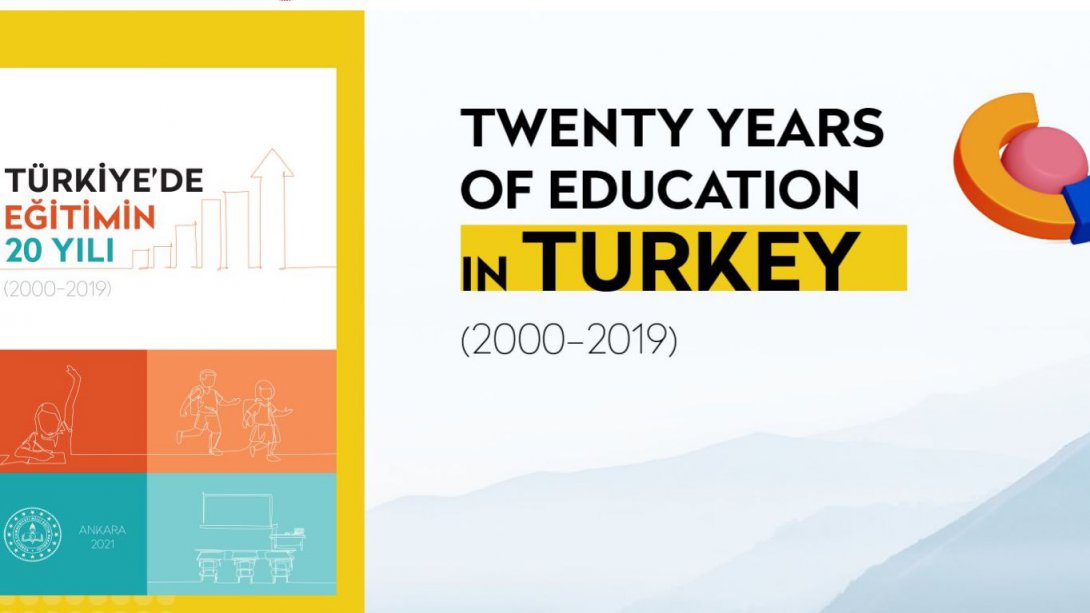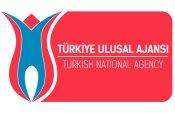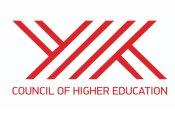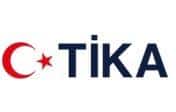THE MINISTRY OF NATIONAL EDUCATION PUBLISHED THE BOOK OF TWENTY YEARS OF EDUCATION IN TURKEY
The Ministry of National Education published a book that analyses the steps taken in the 2000s when transformation in education began by using quantitative indicators. The book entitled, "Twenty Years of Education in Turkey" focuses on transformation of education and analyses education indicators between 2000 and 2019.
Indicators in the book based on formal education statistics and data are collected under three main titles: access to education, indicators concerning investments and education performance. Changes in last two decades under these titles are analyzed at the provincial level and improvements in 81 provinces are presented in the book.
Book which includes the preface of President Recep Tayyip Erdoğan will be a reference as it reveals the results of steps taken in the 2000s with the purpose of holistic improvement of education system.
Minister of National Education Mahmut Özer said, "We continue to monitor all indicators and keep up with the developments in order to increase the quality of the education system. The book aims to present the developments achieved in education in the last 20 years by using educational indicators. The book reveals that important steps were taken in 2000s under the leadership of Mr. President Recep Tayyip Erdoğan in order to improve education services and increase the quality of education in Turkey. Within this framework, new schools and classrooms were established in the country, the number of teachers in primary education was doubled and it tripled in secondary education. Moreover, these improvements were not limited only with certain grades of education system but it also included all levels of education from preschool to higher education. I hope that this book will be a reference in terms of analyzing improvements achieved in the education system and I would like to thank my colleagues for their contributions to the book."
Access to education
The book analyzed schooling rates in different levels of education under the chapter of access to education indicators. Schooling rates were presented both for females and males. Similarly, it included statistics concerning the number of teachers, students, classrooms and schools in different levels of education.. The book revealed that 4+4+4 education system which was adopted in 2012 contributed greatly to the schooling rate in Turkey. Schooling rate in secondary education, which was 44 percent in 2000, has increased to 88 percent in 2019.
Educational investments
Under this chapter, changes in the budget of the Ministry over the years were analyzed together with various different indicators. Increasing number of students was considered while analyzing the budget and investment budget of the Ministry. Moreover, the number of scholarships and increase in the schools with dorms were studied in detail in the book. Recently, an increasing number of textbooks distributed free to students since 2003 was also mentioned under this chapter.
Education performance
Turkey's performance in the Program for International Student Assessment (PISA) and Trends in International Mathematics and Science Study (TIMSS) over the years was taken into consideration. The changes in mean scores, the rate of students in low and high proficiency levels were considered to evaluate the performance of education system.
Improvements in provincial level
Last chapter of the book analyzed educational improvements at the provincial level. This chapter includes detailed quantitative improvements in provincial level in the last 20 years. Changes in the number of students, teachers and classroom and number of students per classroom and teacher between 2006 and 2019 were taken into consideration in the study. The book reveals that some provinces which were considered disadvantaged in the 2000s achieved improvement over the years. For example, the number of teachers per classroom in primary education in İstanbul was 51 in 2006 and it decreased to 30 in 2019. Number of students per teacher in Ağrı, which was 42 in 2006, decreased to 16 in 2019.
Click to read the PDF version of 20 Years of Education in Turkey.









